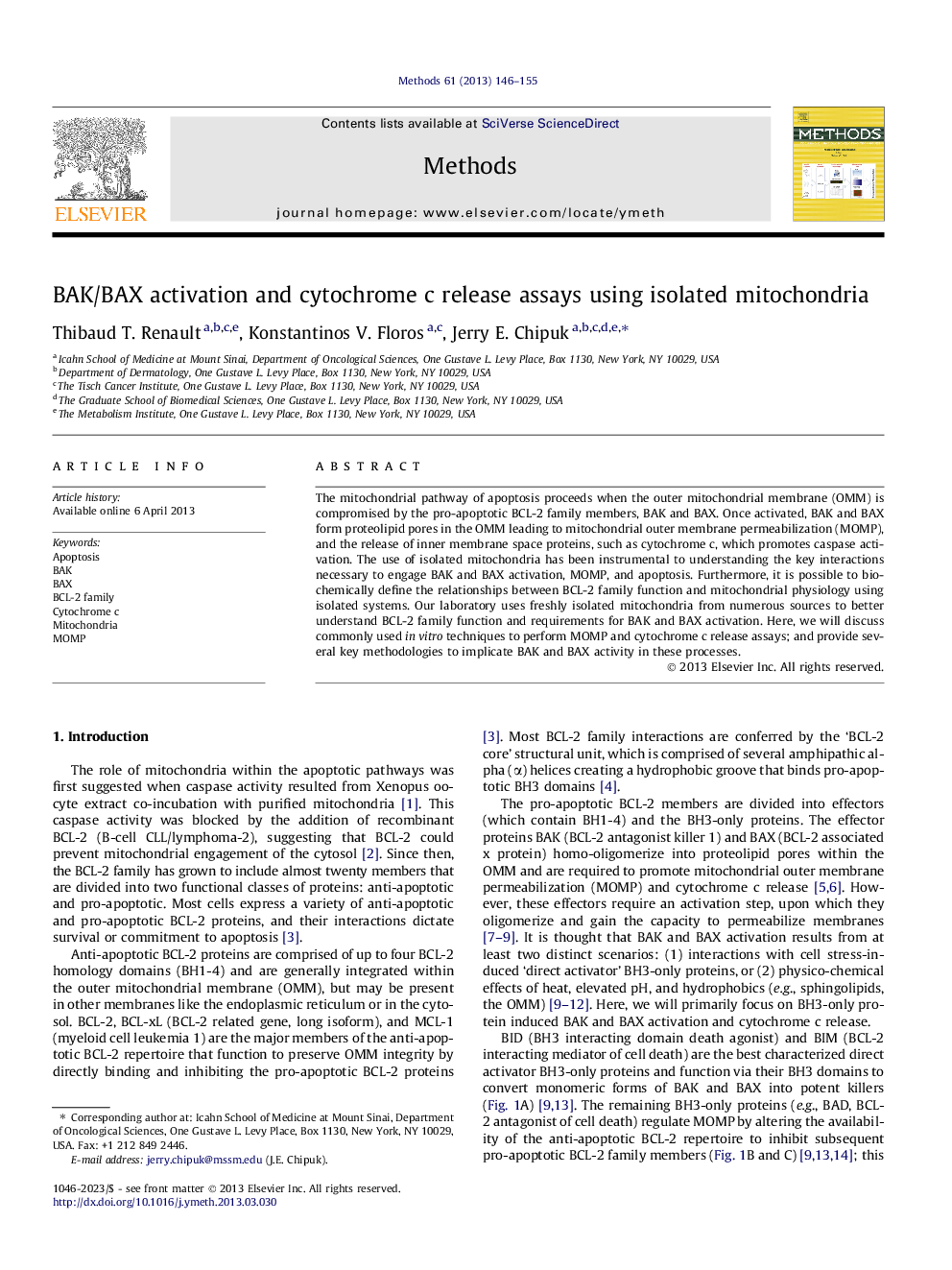| Article ID | Journal | Published Year | Pages | File Type |
|---|---|---|---|---|
| 10825958 | Methods | 2013 | 10 Pages |
Abstract
The mitochondrial pathway of apoptosis proceeds when the outer mitochondrial membrane (OMM) is compromised by the pro-apoptotic BCL-2 family members, BAK and BAX. Once activated, BAK and BAX form proteolipid pores in the OMM leading to mitochondrial outer membrane permeabilization (MOMP), and the release of inner membrane space proteins, such as cytochrome c, which promotes caspase activation. The use of isolated mitochondria has been instrumental to understanding the key interactions necessary to engage BAK and BAX activation, MOMP, and apoptosis. Furthermore, it is possible to biochemically define the relationships between BCL-2 family function and mitochondrial physiology using isolated systems. Our laboratory uses freshly isolated mitochondria from numerous sources to better understand BCL-2 family function and requirements for BAK and BAX activation. Here, we will discuss commonly used in vitro techniques to perform MOMP and cytochrome c release assays; and provide several key methodologies to implicate BAK and BAX activity in these processes.
Related Topics
Life Sciences
Biochemistry, Genetics and Molecular Biology
Biochemistry
Authors
Thibaud T. Renault, Konstantinos V. Floros, Jerry E. Chipuk,
